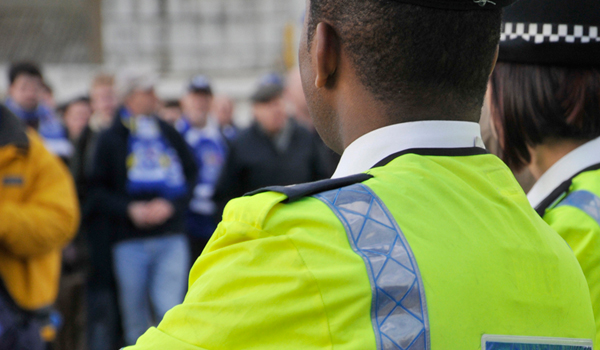Football banning orders at ten year high with arrests also increasing
The number of football banning orders issued last season in England and Wales was the highest in more than ten years, with football-related arrests also increasing, according the latest Home Office figures.
During the 2022 /23 season there were 682 new banning orders issued, an increase of 32 per cent (166) compared with the 2021/22 season, and the highest number issued since the 960 in 2010/11 campaign.
As of August 1, 2023, there were a total of 1,624 football banning orders in force. This is an increase of 24 per cent compared with July last year (1,308), with the Home Office saying levels are returning closer to those seen prior to Covid-19 (1,771 on August 1, 2019).
Of the 1,624 football banning orders currently in force, almost all (1,618) were issued to males, with around 70 per cent (1,133) given to those aged between 18 and 34.
There were a total of 2,264 football-related arrests, up from 2,198 last season, but those figures are not directly comparable, since arrests for Class A drug offences (200) and arrests made in England and Wales relating to the World Cup in Qatar (101) were included in the statistics for the first time. Possession of class A drugs became a Schedule 1 offence in November 2022,
There were no arrests reported in relation to women’s regulated football matches which were also included for the first time.
The Home Office says prior to the 2019/20 season, there had been a downward trend in football-related arrests; a decrease of more than half from 3,089 in the 2010/11 season, to 1,381 in the 2018/19 season (before Covid-19). However, in the past two seasons, the number of arrests has increased to levels similar to the 2013/14 season.
More than half of the 2,264 arrests last season took place inside football grounds, with the majority of arrests of supporters of clubs in the top five divisions of English football.
The most common football-related arrest offence types were public disorder (34 per cent), violent disorder (21 per cent), alcohol offences (nine per cent) and the possession of Class A drugs (nine per cent).
The most commonly reported types of incident at football matches involved pyrotechnics (at 620 matches) and throwing missiles (at 573 matches).
Hate crime incidents were reported at 370 matches last season. Of these, 248 were related to race and 119 to sexual orientation.
There were also 234 recorded incidents of online hate crime, which became an offence under the Football Spectators Act 1989 from July last year.
This is up from the 103 recorded in the 2021/22 season, but the Home Office says this is likely due to improved and more standardised methods of recording rather than an increase in the number of online hate crime incidents over this time.


